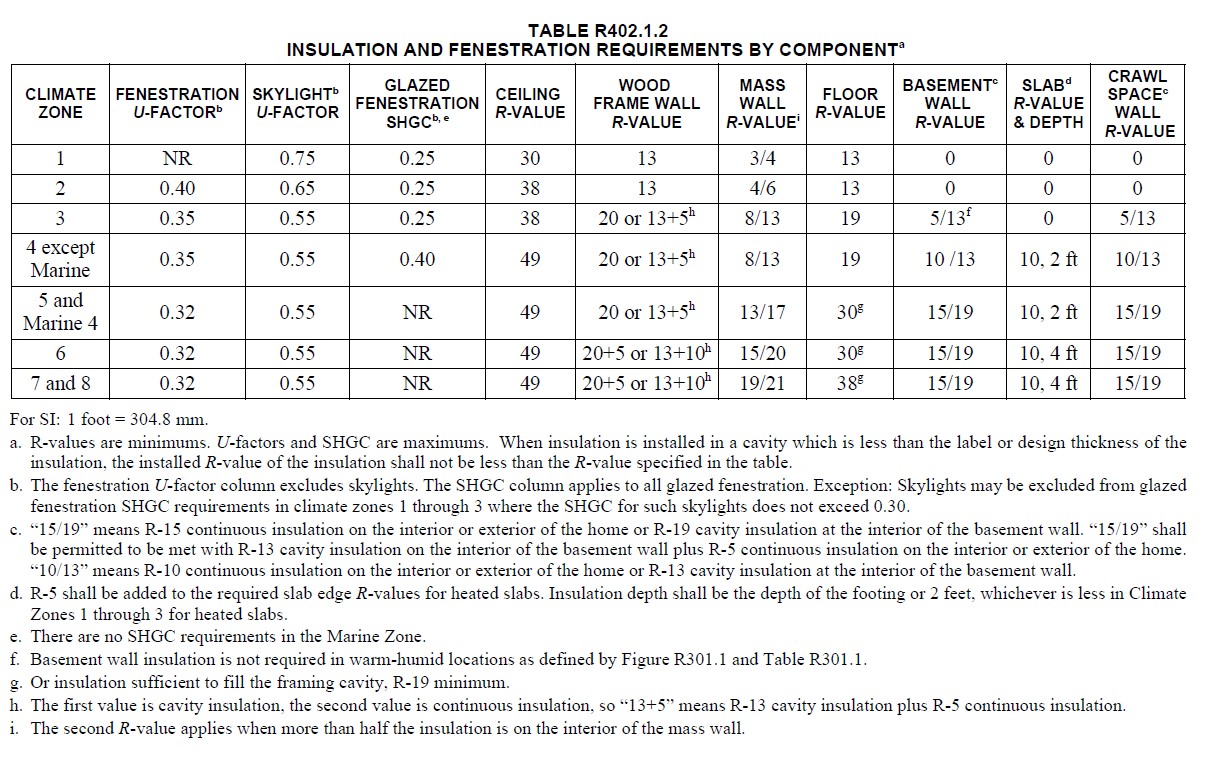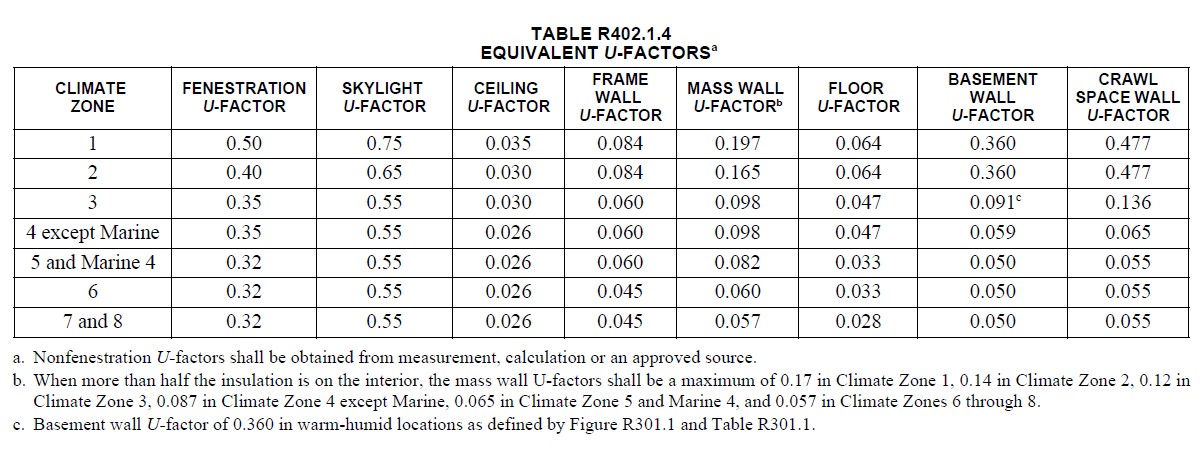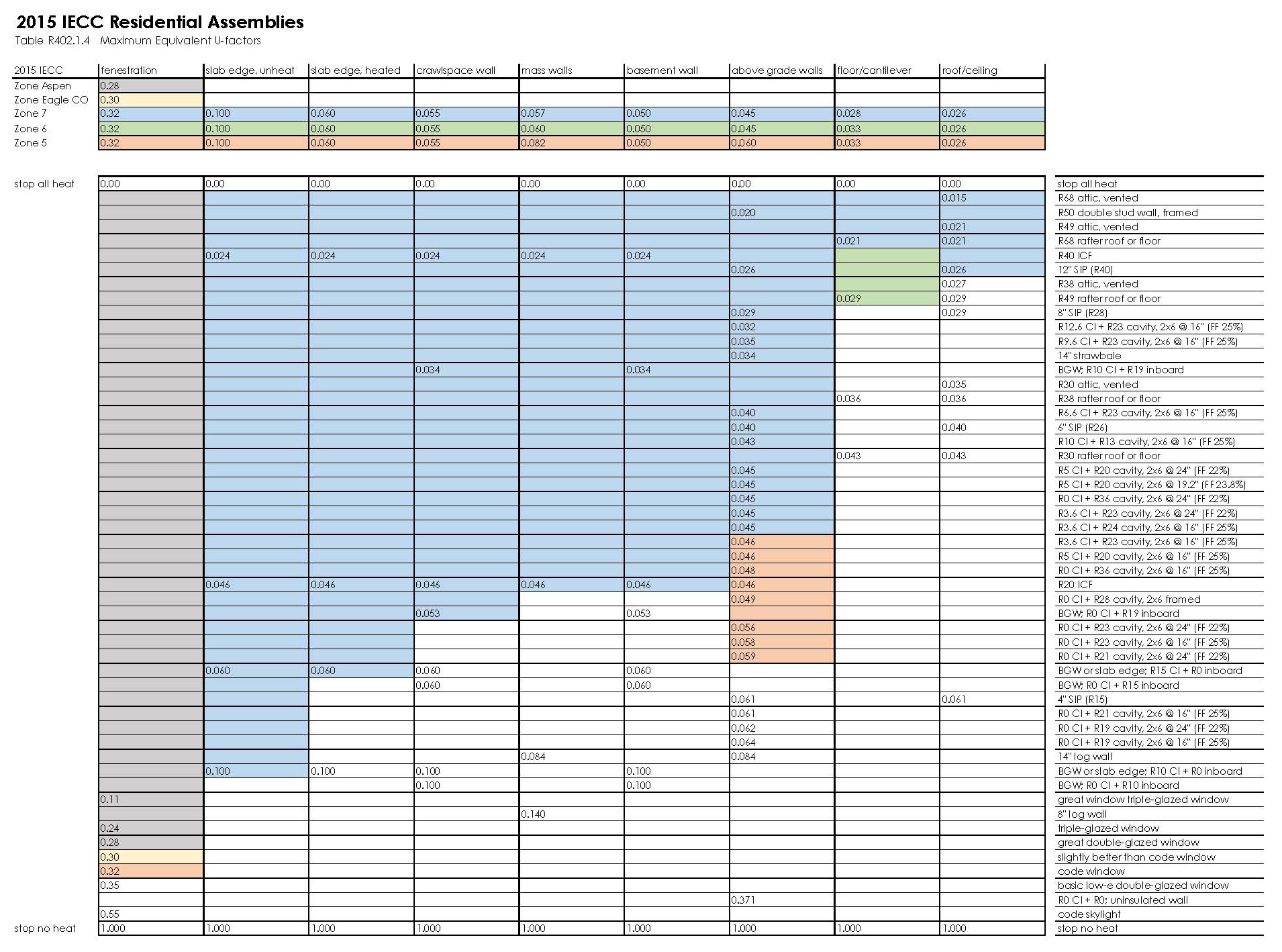I review quite a few residential IECC (International Energy Conservation Code) submittals, and I would estimate that three-quarters of them are submitted as a straight-up prescriptive submittal. That’s when the table below is followed, without deviation. There is nothing wrong with this approach, but if a little flexibility is required, then leave the R-values behind and look at assemblies as U-factors, that can be morphed and traded around.

The U-factor alternative (2015 IECC R402.1.4) is a very powerful and useful method, but I don’t see it get used much.

I think it can be useful to use a chart like the one below to see building assembly alternatives by U-factor. PDF link… U-factor alternative assemblies

For instance; can I substitute OVE (Optimum Value Engineering) or Efficient Framing for CI (Continuous Insulation) in zones 6 & 7. The Prescriptive compliance alternative would have at least R5 CI installed on the exterior of the above grade walls. The U-factor alternative says; use any wall with a U-factor of .045 or better. So, at a glance, from the list, I see that I could substitute R3.6 CI (i.e. 1.5” ZIP insulated sheathing) for the R5 CI and bump up the cavity insulation number to R23 and build the wall with efficient framing techniques. Don’t like CI at all? Then substitute an efficient framed wall with the cavities foamed solid to R36. Don’t like CI or efficient framing? Then you could use a 6” SIP, ICF or straw bale. Check the total U-factor of your specific assembly, it could vary from the U-factors on the list by a couple of thousands. Here is a super-good online wall calculator for R-values and U-factors including checks for moisture control.
https://www.appliedbuildingtech.com/fsc/calculator
If you still don’t like the choices that the U-factor alternatives gives, then it is time to move up to the Total UA Alternative, AKA RESchecks (2015 IECC R402.1.5). Often, projects get bumped out of the prescriptive path alternative because the insulation can’t easily be provided in a particular location. Then the Total UA Alternative could be used, because it can trade-off different assemblies. For instance, slab edge insulation, often hard to do at a door threshold, patio or deck attachment or behind stone veneer. The uninsulated slab edge can be “traded” for surplus U-factors on completely different assemblies anywhere in the project.
If you still don’t like the choices that the Total UA Alternative gives, or still having trouble reaching the code threshold, then it is time to go fully custom with the Simulated Performance Alternative (2015 IECC R405) or the Energy Rating Index (ERI) Compliance Alternative (2015 IECC R406). Both alternatives can checked by the software at the same time, but the ERI Alternative is more powerful, because it take into consideration low infiltration rates, high efficacy lighting, appliances and renewable energy sources. The only certified ERI program currently is the HERS Rating.
Please contact us if we can help you comply with the energy code in the smartest possible way.
Link to Colorado Energy Conservation Code Hub for; Aspen, Basalt, Carbondale, Eagle County, Pitkin County, Town of Snowmass Village, Town of Telluride and the Town of Mountain Village